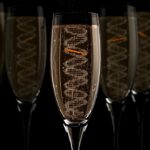
Alcohol consumption can indirectly cause damage to our DNA and elevate cancer risk. KJ Patel’s group in the LMB’s PNAC Division has identified a novel repair mechanism for DNA damage created by by-products of alcohol metabolism.
MRC Laboratory of Molecular Biology
One of the world's leading research institutes, our scientists are working to advance understanding of biological processes at the molecular level - providing the knowledge needed to solve key problems in human health.